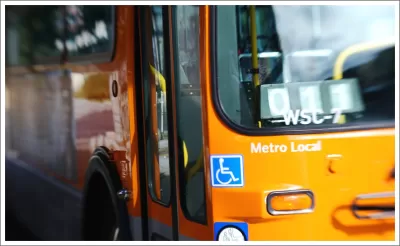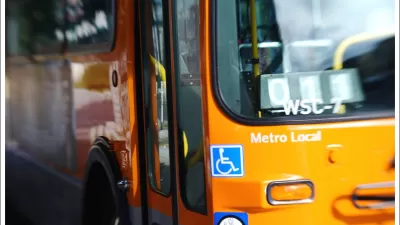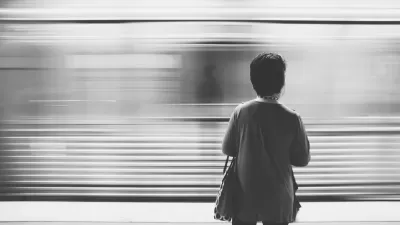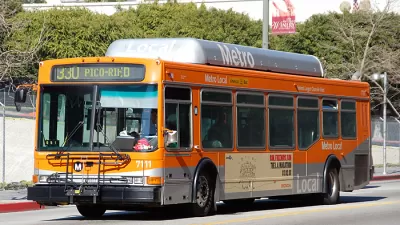A reporter rides the bus in Los Angeles and discovers the interesting, complicated, and sometimes heartbreaking stories that riders bring on board.

Frank Shyong writes about his experience riding on the Line 2 local bus that runs between downtown Los Angeles and Westwood near the UCLA campus. "The route connects some of L.A.’s richest ZIP codes to some of its poorest, the eastbound route starting in Westwood and taking Sunset Boulevard all the way downtown, where it terminates in front of a Jack in the Box on a block that always smells like urine."
Most Metro bus riders are people of color, particularly Latino, and poor or lower income, and many are dependent on the bus as their sole means of transportation, says Shyong. He describes the bus as a complex and diverse world:
What I most appreciated about the bus, and what I think a lot of us love about the idea of public transit, is the people. Because a city is its people, and in L.A., people are from everywhere and go through everything. Poverty, mental illness, struggle, exhaustion and kaleidoscopic diversity — the bus makes you look all of that in the face.
Shyong shares snippets of the lives of the various people he meets during his week of riding the bus. One rider is a woman named Adela who is headed to the Westside to clean houses, as a number of women on this route do. "During the two-hour ride, she often stares out the window and thinks about her family back in Chiapas, Mexico. Her mother is getting older, and Adela wants to be with her. Maybe next year, after she saves up enough money. Maybe in two years. One house at a time."
FULL STORY: The No. 2 Metro bus connects the fantasies and realities of Los Angeles

Alabama: Trump Terminates Settlements for Black Communities Harmed By Raw Sewage
Trump deemed the landmark civil rights agreement “illegal DEI and environmental justice policy.”

Study: Maui’s Plan to Convert Vacation Rentals to Long-Term Housing Could Cause Nearly $1 Billion Economic Loss
The plan would reduce visitor accommodation by 25% resulting in 1,900 jobs lost.

Why Should We Subsidize Public Transportation?
Many public transit agencies face financial stress due to rising costs, declining fare revenue, and declining subsidies. Transit advocates must provide a strong business case for increasing public transit funding.

Paris Bike Boom Leads to Steep Drop in Air Pollution
The French city’s air quality has improved dramatically in the past 20 years, coinciding with a growth in cycling.

Why Housing Costs More to Build in California Than in Texas
Hard costs like labor and materials combined with ‘soft’ costs such as permitting make building in the San Francisco Bay Area almost three times as costly as in Texas cities.

San Diego County Sees a Rise in Urban Coyotes
San Diego County experiences a rise in urban coyotes, as sightings become prevalent throughout its urban neighbourhoods and surrounding areas.
Urban Design for Planners 1: Software Tools
This six-course series explores essential urban design concepts using open source software and equips planners with the tools they need to participate fully in the urban design process.
Planning for Universal Design
Learn the tools for implementing Universal Design in planning regulations.
Smith Gee Studio
Alamo Area Metropolitan Planning Organization
City of Santa Clarita
Institute for Housing and Urban Development Studies (IHS)
City of Grandview
Harvard GSD Executive Education
Toledo-Lucas County Plan Commissions
Salt Lake City
NYU Wagner Graduate School of Public Service





























